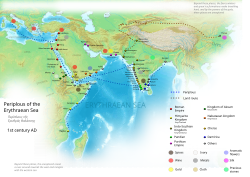Islam in India
Islam is the second largest religion in India. In 2017, India had 189,000,000 Muslims (followers of Islam). India ranks third of the top list countries which have largest Muslim population, after Indonesia and Pakistan.[7] Most Muslims in India follow the Sunni branch, while about 15% are Shia.[8]
 | |
| Total population | |
|---|---|
| c. 200 million (14.61% of the population)[2] (2021 Census est.) | |
| Regions with significant populations | |
| Uttar Pradesh | 38,483,970[3] |
| Assam | 24,654,830[3] |
| Kerala | 17,557,810[3] |
| Maharashtra | 12,971,150[3] |
| West Bengal | 10,679,350[3] |
| Bihar | 8,873,470[3] |
| Andhra Pradesh (includes present-day Telangana) | 8,567,490[3] |
| Jammu and Kashmir | 8,082,410[3] |
| Karnataka | 7,893,070[3] |
| Rajasthan | 6,215,380[3] |
| Religions | |
| Majority Sunni Islam with significant Shia and Ahmadiyya minorities[4] | |
| Languages | |
Liturgical
| |
| This article is part of a series on: |
| Islam |
|---|
 |

Islam first reached India along the Arab coastal trade routes in Gujarat and the Malabar Coast, soon after it began in the Arabian Peninsula. It later spread inland when Arab forces conquered Sindh in the 7th century, and it reached Punjab and North India in the 12th century through the conquests by the Ghaznavids and Ghurids. Since then, Islam has become an important part of India's religious and cultural heritage.[9]
Some of the earliest mosques in India were built by Arab traders. For example, the Barwada Mosque in Ghogha, Gujarat was built before 623 CE;[10] the Cheraman Juma Mosque in Methala, Kerala was built in 629 CE; and the Palaiya Jumma Palli (also called The Old Jumma Masjid) in Kilakarai, Tamil Nadu was built between 628 and 630 CE.[11][12]
According to a local legend, the first mosque in India was built in 624 CE at Kodungallur in present-day Kerala. This mosque was built by the order of the last ruler of the Chera dynasty, who converted to Islam during the lifetime of Prophet Muhammad (c. 570–632). Similarly, some Tamil Muslims believe that their ancestors converted to Islam during Muhammad’s lifetime. The local mosques in these areas date back to the early 700s.[13]
Islam In India Media
Names, routes and locations of the Periplus of the Erythraean Sea (1st century CE)
Cheraman Perumal Juma Masjid on the Malabar Coast, probably the first Mosque in India.
The Taj Mahal in Agra, India. It was built under Mughal emperor Shah Jahan in the 17th century, and represents Indo-Islamic architecture.
Muslim family from Malabar, 1540
Maulana Azad was a prominent leader of the Indian independence movement and a strong advocate of Hindu-Muslim unity. Shown here is Azad (left) with Sardar Patel and Mahatma Gandhi in 1940.
Abdul Ghaffar Khan with Gandhi in 1930. Also known as Frontier Gandhi, Khan led the non-violent opposition against the British Raj and strongly opposed the partition of India.
Related pages
References
- ↑ Muslim population in 2023 estimated to be 20 crore: Lok Sabha. 21 July 2023. https://timesofindia.indiatimes.com/india/muslim-population-in-2023-estimated-to-be-20-crore-lok-sabha/articleshow/101996898.cms.
- ↑ "Can Muslims surpass Hindus in population numbers? Experts say practically not possible".
- ↑ 3.0 3.1 3.2 3.3 3.4 3.5 3.6 3.7 3.8 3.9 "India - Muslim population 2011". Statista. Retrieved 2020-02-20.
- ↑ "World Directory of Minorities and Indigenous Peoples - India : Muslims".
- ↑ Al-Jallad, Ahmad (30 May 2011). "Polygenesis in the Arabic Dialects". Encyclopedia of Arabic Language and Linguistics. BRILL. doi:10.1163/1570-6699_eall_EALL_SIM_000030. ISBN 9789004177024.
- ↑ "Why the 30% Muslim vote share is crucial in Bengal, explains Robin Roy". Free Press Journal. Retrieved 2021-11-08.
- ↑ "Photos: Indian Muslims celebrate the beginning of Ramadan". Al Jazeera. Retrieved 2023-12-25.
- ↑ "India 2012 International Religious Freedom Report" (PDF). United States Department of State. 13 May 2013. Section I. Religious Demography. Retrieved 07 Feb. 2025.
{{cite web}}: Check date values in:|access-date=(help) - ↑ "India's oldest mosque and growing irrelevance of Muslim vote in Gujarat". The Times of India. 2017-12-08. . https://timesofindia.indiatimes.com/city/ahmedabad/indias-oldest-mosque-and-growing-irrelevance-of-muslim-vote-in-gujarat/articleshow/61985802.cms. Retrieved 2025-02-06.
- ↑ "Oldest Indian mosque: Trail leads to Gujarat". The Times of India. 2016-11-06. . https://timesofindia.indiatimes.com/city/ahmedabad/Oldest-Indian-mosque-Trail-leads-to-Gujarat/articleshow/55270285.cms. Retrieved 2025-02-06.
- ↑ Prof. Mehboob Desai,Masjit during the time of Prophet Nabi Muhammed Sale Allahu Alayhi Wasalam, Divy Bhasakar, Gujarati News Paper, Thursday, column 'Rahe Roshan', 24 May, page 4.
- ↑ Rathaur, Ravi (2018-03-22). "Top 11 Famous Muslim Religious Places in Gujarat". Gujarat Travel Blog. Retrieved 2025-02-06.
- ↑ Metcalf, Barbara D. (2009-09-08). Islam in South Asia in Practice. Princeton University Press. ISBN 978-1-4008-3138-8.









